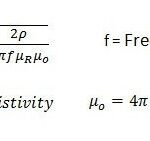What is a Good Signal Strength for LTE?
Today, let’s dive into the topic of signal strength in LTE, an important aspect of mobile communication that directly impacts the quality of your connection. As we learned in previous articles, signal strength plays a key role in determining how well your device connects to the network, affecting everything from call quality to internet speed. So, what exactly is a good signal strength for LTE? Let me break it down for you.
Understanding Signal Strength in LTE
In LTE, signal strength is typically measured in terms of RSRP (Reference Signal Received Power) and RSRQ (Reference Signal Received Quality). These values indicate how strong and stable the signal is from the base station to your device. A good signal strength means your device can maintain a stable connection, resulting in faster data speeds, better voice call quality, and fewer dropped connections.
RSRP Values and Their Meaning
RSRP is one of the key metrics for measuring signal strength in LTE. It is the power level received from the reference signal sent by the cell tower. The strength of this signal helps determine how well your device can connect to the network. Here’s a quick look at how different RSRP values are interpreted:
| RSRP Value (dBm) | Signal Quality |
|---|---|
| -90 dBm and above | Excellent signal strength |
| -95 dBm to -85 dBm | Good signal strength |
| -100 dBm to -95 dBm | Fair signal strength |
| -105 dBm to -100 dBm | Poor signal strength |
| -110 dBm and below | Very poor signal strength |
What Does a Good RSRP Mean for You?
Now that we know what RSRP values represent, let’s focus on what constitutes a good signal for LTE. If your RSRP is above -90 dBm, you’re likely in an area with excellent LTE coverage, and you can expect strong network performance. However, if the RSRP drops below -95 dBm, you might start noticing slower internet speeds, interruptions in data service, or poor voice quality on calls. In situations where the RSRP is below -105 dBm, your device might struggle to maintain a stable connection.
RSRQ and Its Role in LTE Signal Quality
While RSRP gives you an idea of the strength of the LTE signal, RSRQ provides information about the quality of that signal. A high-quality signal means less interference and better overall performance. RSRQ values are usually in the range of -20 dB to 0 dB. The higher the RSRQ value (closer to 0), the better the signal quality, meaning fewer dropped calls and better data speeds.
To give you an idea, here’s a simple range of RSRQ values and what they typically indicate:
| RSRQ Value (dB) | Signal Quality |
|---|---|
| -10 dB to -20 dB | Excellent signal quality |
| -15 dB to -10 dB | Good signal quality |
| -20 dB to -15 dB | Fair signal quality |
| Below -20 dB | Poor signal quality |
Why Does Signal Strength Matter for You?
Good signal strength is essential for you to have a seamless experience with your LTE connection. Whether you’re streaming a video, making a VoLTE call, or browsing the web, a strong signal ensures that your device can access the network without interruption. As you might have noticed, signal strength can fluctuate depending on various factors, such as your location, distance from the tower, and the level of network congestion. When you’re in a building or an area with many obstacles, you might see your signal strength drop, which could affect your experience.
In the next article, we’ll explore how network optimization techniques help maintain good signal strength, especially in areas with weak coverage. But for now, you should have a better understanding of what constitutes good LTE signal strength and how RSRP and RSRQ can help assess the quality of your connection.


